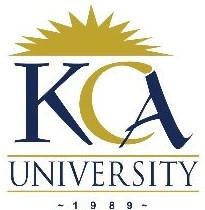 UNIVERSITY EXAMINATIONS: 2010/2011
UNIVERSITY EXAMINATIONS: 2010/2011
SECOND YEAR EXAMINATION FOR THE DEGREE OF BACHELOR OF
SCIENCE IN INFORMATION TECHNOLOGY
BIT 2202: INFORMATION SYSTEM DEVELOPMENT
DATE: AUGUST 2011 TIME: 2 HOURS
INSTRUCTIONS: Answer question ONE and any other TWO questions
Question One (Compulsory)
a) Current trends in software engineering are moving away from the waterfall model for large projects
and moving toward iterative methods such as the spiral model. Discuss what are we gaining and
losing as a result (8 Marks)
b) Describe the relationship between schedule, system features, and system cost. (3 Marks)
c) Differentiate between functional vs non functional requirements (4 Marks)
d) What are “coding standards” and why are they useful (4 Marks)
e) Describe the term class inheritance (2 Marks)
f) List three software engineering metrics and describe their use in managing the quality of a software
product. (3 Marks)
g) Describe how prototyping supports requirements engineering (2 Marks)
h) Describe advantages of software development with reuse (4 Marks)
Question Two
a) During the detailed design of an object oriented system, the developer needs to consider reuse and
the assignment of responsibilities to classes. Explain how the following can guide the designer in
deciding where operations should be located:-
i) Low coupling. (4 Marks)
ii) High cohesion. (4 Marks)
iii)Polymorphism. (4 Marks)
b) How can collection classes be used to implement an association between two classes? (4 Marks)
c) How can referential integrity be enforced in an object oriented program? (4 Marks)
Question Three
The Systems Development Life Cycle (SDLC) has had an enormous influence as a generalised method
for developing systems.
i) Distinguish between techniques, tools and methodologies in the context of the SDLC. (6 Marks)
ii)What are the strengths and limitations of the traditional SDLC? (8 Marks)
iii) Would you adopt the SDLC for developing a small database application on your stand-alone
PC? Would you modify the SDLC in any way? Justify your answer. (6 Marks)
Question Four
Modern development methods such as the Unified Software Development Process (USDP) and
eXtreme Programming (XP) are based on an Iterative and Incremental approach to development.
a) Explain how iterative and incremental approaches differ from the traditional “waterfall” approach to
software development. (10 Marks)
b) Discuss ways in which prototyping can be used to get users involved in Information Systems
Development? (10 Marks)
Question Five
a) Identify criteria that could be used to decide whether an information system should be developed inhouse, through an application package or through an out-sourcing supplier. (10 Marks)
b) An organization is finding it increasingly difficult to add new features to their management
information system. They are thinking about completely replacing the existing system with a new
one. What factors should they consider before making this decision? (10 Marks)